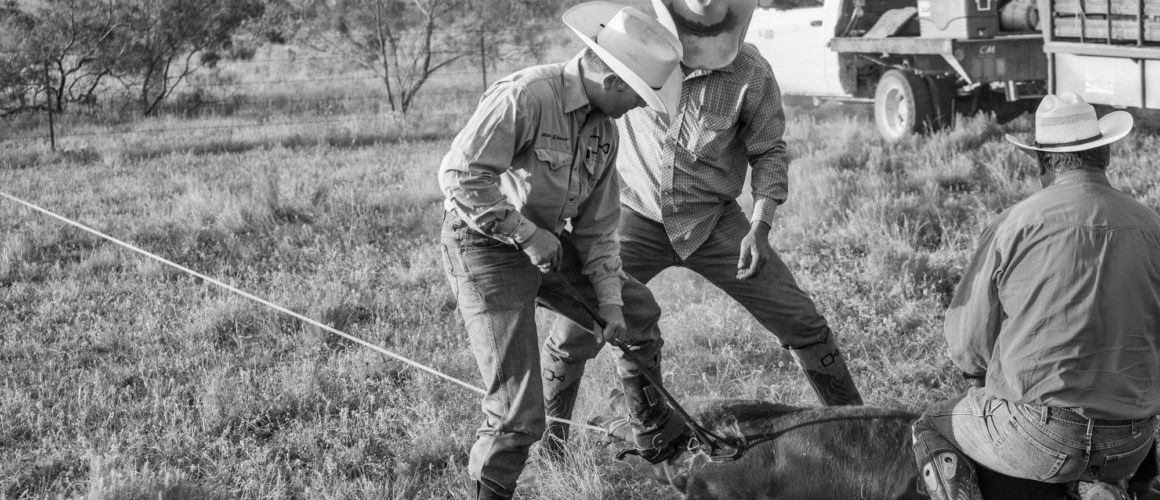
The Beginning
The Spade Ranch legacy began over 125 years ago, in 1889, when DeKalb, Illinois natives Colonel Isaac Ellwood and his son, W.L. Ellwood, made a simple business trip to West Texas.
The Invention
In 1874 Ellwood became one of the original patent holders of barbed wire when he and his neighbor developed an economical way to keep livestock out of the area’s many farms. The invention quickly changed the Midwest farmland, but the Ellwoods saw a burgeoning market in the vast expanses of the West Texas plains. They went as far as the rails would take them to Colorado City, Texas, the “cowman’s capital,” where landowners, ranchers and cowboys gathered to network. While sales were the primary purpose of the trip, Ellwood also saw investment opportunity in the local real estate.
The Purchase
Among the ranchers the Ellwoods met were the Snyder brothers. The brothers must have been shrewd businessmen themselves because not only did they resist Ellwood’s sales pitch, they convinced him to buy their 130,000-acre ranch. The ranch was headquartered at Renderbrook Springs. Renderbrook took its name, in a rather distorted form, from Captain Rendlebrock of Fort Concho, Texas, who camped at the spring and had a small skirmish with the Comanche in 1872. As the Ellwoods built their fortune, their natural interests were in cattle, horses and land. In fact, Ellwood had put together a remuda of distinction in Illinois, made up of imported Clydesdales and Percherons. The elder Ellwood quickly put his son, W.L. to work purchasing a herd to stock the new ranch. He found 800 head of cows from J.F. “Spade” Evans — branded with the distinctive Spade. Along with the cows he bought the brand and the ranch took on the name. The Ellwoods’ dealings with the Snyder brothers did not end with the Renderbrook purchase. In 1891 the Ellwoods toured another 128,000 acres for sale by Snyder brothers in Lamb and Hockley counties, just west of Lubbock, Texas. The Ellwoods made an offer to the Snyder brothers and once again the sales price included horseflesh. The offer was accepted and the Snyder brothers deeded the ranch to the Ellwoods and took delivery of a carload of horses at Brownwood. Another carload of horses went on to Colorado City for use in the newly expanded Ellwood ranching empire now consisting of both the Renderbrook Ranch and the “Spade Ranch,” as the Panhandle ranch was dubbed. Through additionnal purchases the Spade Ranch grew to 265,000 acres by 1906.
The Migration
Isaac and W.L. always knew the Spade Ranch in Lamb and Hockley counties was better suited for subdividing and farming; however the railroads, and therefore the people to farm, had yet to arrive. That all changed in 1924 when the railroad extended to Lubbock and people began moving west to settle Texas plains. Over the course of 30 years, almost the entire 265,000 Spade Ranch in Lamb and Hockley counties became subdivided, sold, populated, plowed and farmed. Through the Dust Bowl, Great Depression, two World Wars and countless market turns, regional droughts and hard times, the family remained firm in its commitment to ranching at the Renderbrook and the employees repaid them with unbending loyalty.
The Progression
By the 1960’s, the Spade Ranches began a planned crossbreeding program in the cow-calf operation that continues today — although adjusting with changing market demands. Today, the ranches use composite bulls (Simm/Angus and Balancer) crossing the heifers from one mating to the other composite. This maintains a high level of heterosis while producing a uniform calf crop, a stable breed composition and eliminating the need to buy replacement heifers from other sources. Since the day Isaac Ellwood included a horse in the deal for his first ranch, the horse has been an integral part of the Spade Ranch history. Today, that tradition of importance continues by supplying the Spade cowboys with versatile cow horses, able to make long circles, sort cattle, work a top and hold up through it all.
